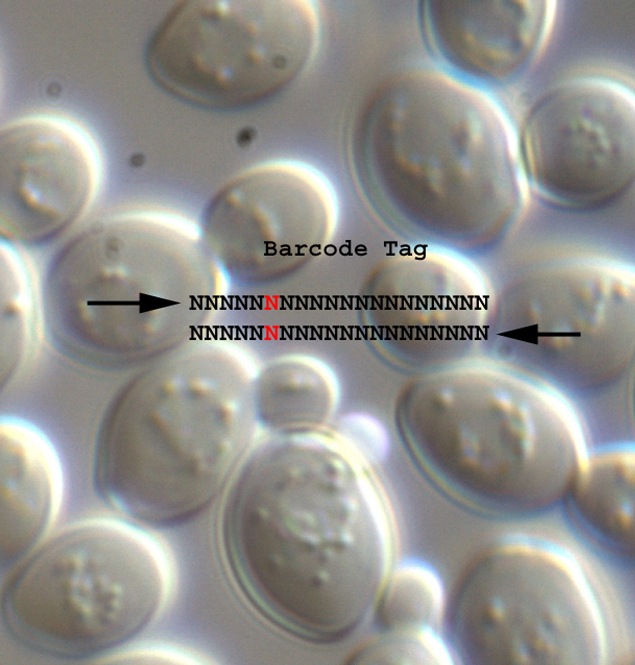
Saccharomyces cerevisiae
(http://tomvolkfungi.net/)
Scientific name: Saccharomyces
cerevisiae

Common name: Brewer’s yeast/ Baker’s yeast
Habitat: Saccharomyces when translated means “sugar fungus”. That is what this yeast uses for food. They are found in the wild growing on the skins of grapes and other fruits.

Means for Classification: Saccharomyces cerevisiae is in the fungi kingdom. The reasons for this classification are because it has a cell wall made of chitin, it has no peptiodglycan in its cell walls, and its lipids are ester linked. It also uses DNA template for protein synthesis and it has larger ribosomes. It is then consider a yeast because it is a unicellular organism so it can not form a fruiting body; like other fungi.
Adaptations: Saccharomyces cerevisiae has adapted in several important ways. One is the fact that they are able break down their food through both aerobic respiration and anaerobic fermentation. They can survive in an oxygen deficient environment for a period. Another adaptation they have is their ability to have both sexual and asexual reproduction. Very few other Ascomycota can do both processes. And very few organisms can do all four of these processes. This allows this species to live in many different environments. (Madigan, 457)
Nutrition: Saccharomyces cerevisiae gets its energy from glucose.
Life Cycle: Saccharomyces cerevisiae has both asexual and sexual reproduction.
In asexual reproduction the haploid of the yeast under goes mitosis and forms more haploid yeasts. There is an a and ά strain of these haploids. Then these haploid yeasts, one from each strain, can fuse together and become on cell. Then the nuclei of both cell fuses together and this cell is now the zygote. These diploid cells can go through mitosis, which they call budding, and four more zygotes or they can under go meiosis and from an ascus which will split into four ascospores. These haploids can then under go germination and become haploid yeast again. (Madigan, 457)
(http://www.nasa.gov/centers/ames/news/releases/2004/yeast/yeast_prt.htm)

Importance: Saccharomyces cerevisiae is one of the most important fungi in the history of the world. This yeast is responsible for the production of ethanol in alcoholic drinks and is the reasons your mother’s bread dough rises in the pan. That is where the names brewer’s and baker’s yeast come from. The process in which it produces ethanol is one way this yeast converts glucose into energy. There are two ways Saccharomyces cerevisiae breaks down glucose. One way is through aerobic respiration. This process requires the presence of oxygen. When oxygen is not present the yeast will then go through anaerobic fermentation. The net result of this is two ATP, and it also produces two by products; carbon dioxide and ethanol. So if this yeast is allowed to grow in a container lacking oxygen it will produce ethanol (alcohol). Humans have been isolating this process since the beginning of history. The yeast helps in the rising of bread with it’s other by-product carbon dioxide. The gas that is produce inside the dough causes it to rise and expand. Both of these processes use the haploid of this yeast for this process. In industry they isolate one strain, either a or ά, of the haploid to keep them from undergoing mating. (Madigan, 457) In the baker’s yeast they have a strain were the production of carbon dioxide is more prevalent then ethanol and vice versa for brewing. (Tomvolkfungi.net) Another importance is that “live yeast supplementation to early lactating dairy goats significantly increased milk production”. (Stella, A.V.;1)
Bibliography:
Freeman, Scott. Biological Science. 2nd ed. Vol. 1. Upper Saddle River, NJ: Pearson Education, 2005.
Madigan, Michael T., and John M. Martinko. Biology of Microorganisms. 11th ed. Vol. 1. Upple Saddle River, NJ: Pearson Education, 2006.
Osley, M A., and D Norris. "The Two Gene Pairs Encoding H2A and H2B Play Different Roles in the Saccharomyces Cerevisiae Life Cycle." Molecular and Cellular Biology 7 (1987): 3473-3481. Biological Sciences. IIlumina. Murphy Library, La Crosse, WI. 25 Apr. 2007.
Stella, A V., R Paratte, L Valnegri, G Cigalino, G Soncini, E Chevaux, V Dell'orto, and G Savoini. "Effect of Administration of Live Saccharomyces Cerevisiae on Milk Production, Milk Composition, Blood Metabolites, and Faecal Flora in Early Lactating Dairy Goats." Small Ruminant Research 67 (2007): 7-13. Web of Science. ISI Web of Knowledge. Murphy Library, La Crosse, WI. 25 Apr. 2007.
Stewart, Graham G. Biological Research on Industrial Yeasts. 1st ed. Vol. 3. Boca Raton, Fl: CRC P, 1987.
Stolc, Viktor, and Sigrid Reinsch. "Saccharomyces Cerevisiae Yeast Strain." National Aeronautics and Space Administration. 20 Apr. 2007 <http://www.nasa.gov/centers/ames/news/releases/2004/yeast/yeast_prt.htm>.
Volk, Tom, and Anne Galbraith. "Tom Volk's Fungus of the Month for December 2002." Tom Volk's Fungi. Dec. 2002. UW-La Crosse. 25 Apr. 2007 <http;//tomvolkfungi.net/>.